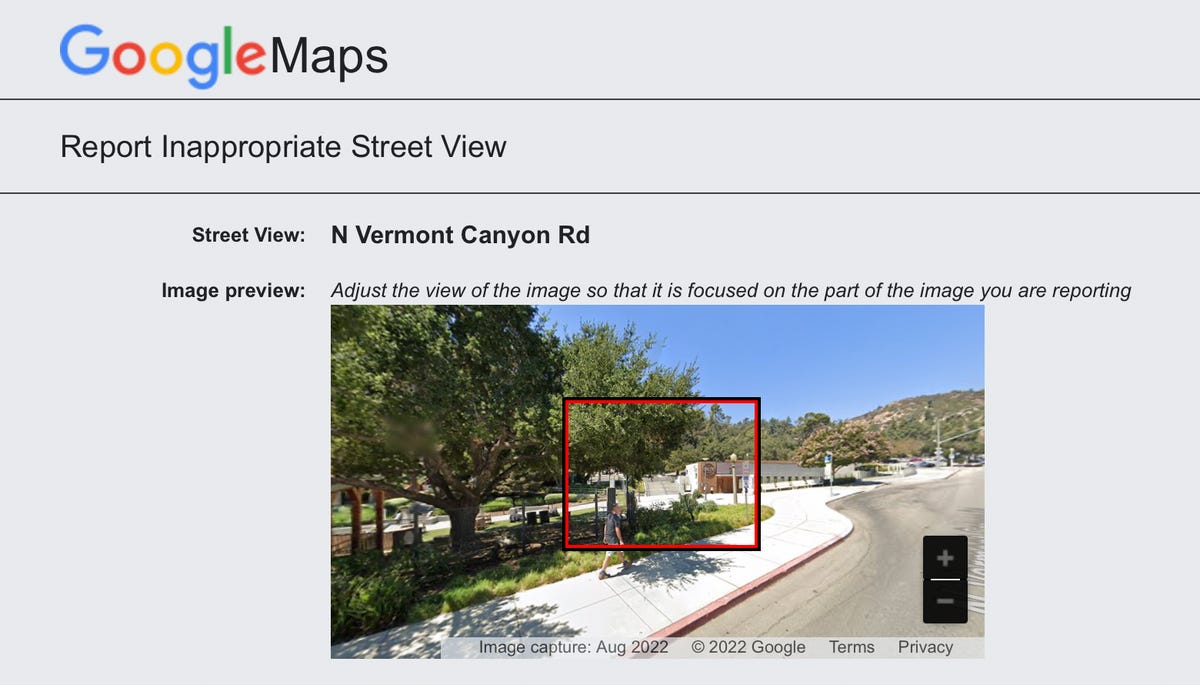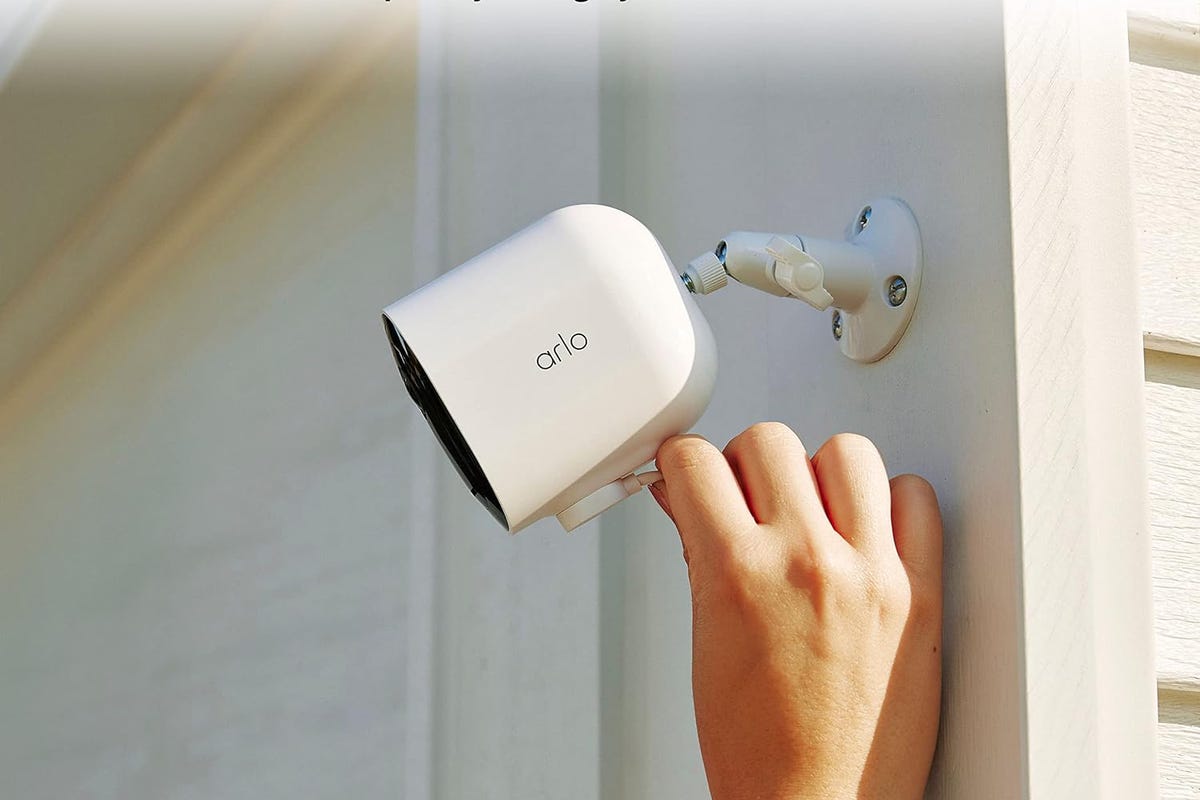
When was the last time you googled your own address or tried to scrub your address from the web? You may be surprised just how available your physical home address is online, frequently connected with your name, phone number -- and images of your home. If that makes you uncomfortable, you aren't alone.
One problem is that everyone sells your home address to data brokers, and we mean everyone. From the United States Post Office to the bank where you have a credit card, organizations will sell address lists, especially if it looks like you recently changed locations.
Access to home addresses can also serve darker purposes, like burglars who may want to spy on neighborhoods and identity thieves who may want to intercept mail or spoof an address. Or you may just be uneasy that people can hop on Google Maps and get an up-close street view of your home, even if you changed addresses since you knew them. Here are the best steps you can take to wipe your address off the internet with a just a little time and investment.
Only give out your address when required
From talking fridges to iPhones, our experts are here to help make the world a little less complicated.
This first step helps all the other tips work: Keep your home address protected by giving it out only when you absolutely have to. For most people, that includes opening a bank account, signing up to vote and other important life tasks.
But in many other cases you can provide an alternative address that doesn't give away the exact location of your home but still gives you the access and mail destination that you need. You can provide this address when you want shipments or mail, or when other organizations like a gym, health clinic or local sign-up sheet ask. Start this habit when you implement any address protection measures.
From talking fridges to iPhones, our experts are here to help make the world a little less complicated.
Blur your current address on map apps
The street view features on map apps can be very helpful if you're a little lost, but they can also feel like a privacy irritation when anyone can type in your address and get a view of your home. That's why Google and others have provided ways to blur your home on street views and image capture so users can't get too good of a look.
As you'll find in our complete guide, you can visit Google Maps on your desktop computer and enter your address. Then just use the Report a Problem link and you can manually choose what parts of the street view to blur so you and your home are protected.

If you want to blur more than what's in the black/red box, use the + button to zoom in.
Nelson Aguilar/CNETApple Maps, with its Look Around tool, offers a similar privacy function, but you'll have to request it specifically. Send an email to mapsimagecollection@apple.com and provide it with your home address and a detailed description of your home in the Look Around feature. Apple will then blur it for your privacy.
Report your address when you find it in search results
Googling your contact info is always a good idea if you're concerned about privacy. If you spot your address showing up in Google's search result -- especially when googling your name or other general information -- then you can make a specific request to Google to remove it.
To do this, go to your Google Account where you can find the icon option to Manage Your Google Account. Then you can select Data & Privacy > History Settings > My Activity. Choose Other Activity in the left side menu, scroll all the way down until you find the Results About You section, and select Get Started.

Visit Google's settings to find Removal Requests for certain information.
This option allows you to create an alert whenever Google notices your address in a search. From the alert section of the Results About You menu, you can request to have that information scrubbed from the internet with the Remove Result option. Google won't always do this: It will leave up addresses found on government sites, news pieces and some businesses, but it's a quick way to remove your address if it's popping up in annoying places.
Hide your address on social medial
Now is the perfect time to check your social media accounts and see if your address is included in your profile information. You may have added it a long time ago without really thinking about it, but social profiles don't need your address -- or for that matter, pictures of your home and street. Visit your account information, the "about you" pages and other spots to make sure your address doesn't show up there.
Check the Whitepages
Whitepages (as opposed to the business-oriented Yellow Pages) is one of the largest collections of home addresses online and often the first stop for someone who's trying to look up a specific address. The good news is that while your address is probably in Whitepages, getting it removed takes only a few seconds. Just visit the Whitepages Suppression Request webpage, and paste in the URL of your Whitepages profile, then request that it be removed.

Past your profile URL in the Whitepage's opt out form.
CNETRemove accounts or request your address be removed
Chances are good you input your home address when signing up for a variety of websites and services. Some of those accounts are important -- you probably want Amazon to keep your home address if you get a lot of shipments, for example. But others are unnecessary, especially if you don't use that account much anymore.
In these cases, we recommend deleting your account or contacting customer service and requesting that your profile be removed. You can also sift through your promotion emails to get some reminders of the services you may have signed up for with your address. Common targets for cleaning up include:
- Shopping website logins
- Old apps you no longer use
- Political organizations
- Nonprofits and religious organizations
- Old subscription services for goods or online content
- Sports website profiles
- Contest websites
Invest in a post office box for deliveries
If you've never signed up for a post office box before, you may be surprised how easy it is. You can apply online at USPS, pick from five different sizes of local boxes and get a box number for your local post office. Prices vary by size and location, but they tend to cost around $30 per for a box large enough to get packages in, down to around $15 for an envelope box. A post office box also allows you to save a signature for important delivery and a few other tricks.

PO Box costs by location and size.
CNETWhen you have a post office box, you can substitute it for nearly any account that wants a shipping address, keeping your home address info offline and out of the hands of advertisers. If you're willing to pay, it's one of the most effective privacy options available.
Some people also prefer to give out an address of a local third-party shipping store so that packages are delivered to the store and can be picked up there. This may work, but it's important that you contact your local shipping store and ask if it allows it, or it could create a delay fiasco.
Set up a virtual mailbox (no, not your email)
Virtual mailbox services are common for some businesses, frequent travelers and those highly protective of their address. A virtual mailbox receives your mail, tosses the junk and scans the important pieces of mail, then forwards them to your account so you can view them online wherever you are.
Virtual mailboxes typically cost around $10 to $20 per month. You'll need to find a virtual mailbox company that offers services in your area and jump through a few legal hoops to authorize it to handle your mail -- steps the service should walk you through. Common options include Anytime Mailbox, PostScan Mail, PhysicalAddress.com, Legal Zoom Virtual Mail (previously Earth Class) and IPostal1.

Arlo's smart camera has a ton of features, but it may be too much for some users.
Arlo/AmazonAvoid using smart home location settings
A number of smart home devices, including powerful security cameras and doorbells, will ask for or require your home address. They do this to enable more advanced mapping features, settings like Ring's Bird's Eye view, weather reports, climate information and other capabilities. However, if you want to protect your home address from outside eyes and potential sales, try to avoid smart home technology that requires a location.
You can usually find alternatives to devices that want your address, such as local storage-only security cameras with simplified account setup. However, signing up for any kind of professional monitoring or subscription service may require address info: You may be able to get away with entering a post office box or similar alternative, but security systems will generally want your real address.
Enable a VPN for extra protection
Internet service provides don't just know your IP address, they can also find out your physical address or at least its proximity. If you'd like to keep that information to yourself, one of the best options is a VPN, or virtual private network.
These services encrypt all your online data and allow you to hide your location in many different ways. Some are free, but the best VPNs typically come with a monthly subscription that starts at just a few dollars. Take a look at our list of the best VPNs, or look up your browsers to see if they offer built-in VPN capabilities.
With your home address more private online, consider adding protection with the best cameras without subscriptions, tips on deterring burglars and the top home security mistakes we're all making.